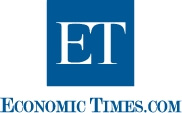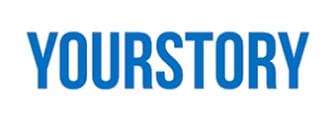Our Services for Bronchoscopy in Thailand
Transparent - Professional - Without Hassles
Bromchoscopy is the procedure in which the doctor looks at your lung disorders. In this procedure a thin tube called as bronchoscope is being passed through your nose or mouth and then from your throat to your lungs.
In bronchoscopy the doctor can view all the structures which forms the respiratory system such as your larynx, trachea and the smaller airways of the lungs called as bronchi and bronchioles.
A bronchoscopy can be used to diagnose a lung disease, a tumor, a chronic cough, an infection. The procedure can also be used to detect the source of pulmonary bleeding or identify foreign bodies in young children.
Advanced forms of imaging are sometimes used to conduct a bronchoscopy. In virtual the bronchoscopy a CT scan is being used to see the airways in more detail. In endobronchial ultrasound a probe is attached to bronchoscope to check for airways and in fluorescence bronchoscopy a fluorescent light is attached to the bronchoscope to see the inner side of the lungs.
Common reasons for needing bronchoscopy are a persistent cough, infection or something unusual seen on a chest X-ray or other test. This can also be done to obtain samples of mucus or tissues or to remove foreign bodies to provide treatment for lung problems.
Treatment of a lung problem (interventional bronchoscopy
Bronchoscopy is usually done in a procedure room in a clinic or in a hospital operating room. The entire procedure takes about four hours. Bronchoscopy itself usually lasts about 30 to 60 minutes.
During bronchoscopy, the bronchoscope is placed in your nose or mouth. The bronchoscope has a light and a very small camera at its tip that displays pictures on a monitor which helps the doctor in guidance. The bronchoscope is advanced slowly down the back of your throat, through the vocal cords and into the airways. It may feel uncomfortable, but it shouldn't hurt. Samples of tissue and fluid may be taken and procedures may be performed using devices passed through the bronchoscope
After one to three days of the procedure you will get to know about the result. The doctor will then decide what treatment is needed and what procedure is to be followed. If biopsy was taken during bronchoscopy then it is needed to be reviewed by a pathologist.
Bronchoscopy is not painful, the bronchoscope is passed through the nose of your mouth, down the back of your throat and through the windpipe and then into the bronchi. The fibre-optics allow light to shine around bends in the bronchoscope and so the doctor can see clearly inside your airways.
A bronchoscopy is relatively quick, lasting 30 to 45 minutes. Because you’ll be sedated, you’ll rest at the hospital for a couple of hours until you feel more awake and the numbness in your throat wears off.
Complications from bronchoscopy are uncommon and usually minor, although they are rarely severe. Some of the complications of bronchoscopy are bleeding, collapsed lung and fever.
You'll be monitored for several hours after bronchoscopy. Your mouth and throat will probably be numb for a couple of hours. You won't be allowed to eat or drink until the numbness wears off. This helps keep food and liquids from entering your airways and lungs.
You should contact your doctor if you have fever for more than 24 hours, chest pain increasing day by day, difficulty in breathing, coughing few tablespoon of blood.






NABH Certified Healthcare Discovery Platform
Vaidam is NABH certified healthcare discovery platform that will connect you to top-notch medical experts, hospitals, wellness options, and trusted travel partners to help identify and make the right healthcare choices.

Researched & Personalized Treatment Plan - Under One Roof
You can search for the best hospitals, read about them, view photographs of the facilities at the hospitals and the places at which the hospitals are located, and check the cost of treatment.

Quality Treatment Within Your Budget
As soon as you post an enquiry, the patient relation team will collect details from you, share them with the doctors and hospitals on Vaidam's panel, and get a personalized treatment plan. We research to get quality treatment within your budget.

Treatment to Travel
Vaidam concierge assists patients, to get medical Visa, the best airline fares and arrangements for your stay. Our concierge also helps you with daily travel, language, and food concerns. Vaidam does everything to be your perfect host. All of Vaidam’s services are free of cost to patients.

International Reach
Vaidam Health has network in 15+ countries, which includes India, Turkey, UAE, Germany, South Korea, Thailand, Malaysia, Spain.
Note: Vaidam Health does not provide medical advice, diagnosis or treatment. The services and information offered on www.vaidam.com are intended solely for informational purposes and cannot replace the professional consultation or treatment by a physician. Vaidam Health discourages copying, cloning of its webpages and its content and it will follow the legal procedures to protect its intellectual property